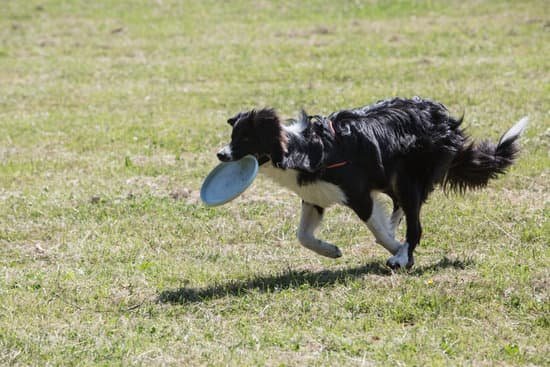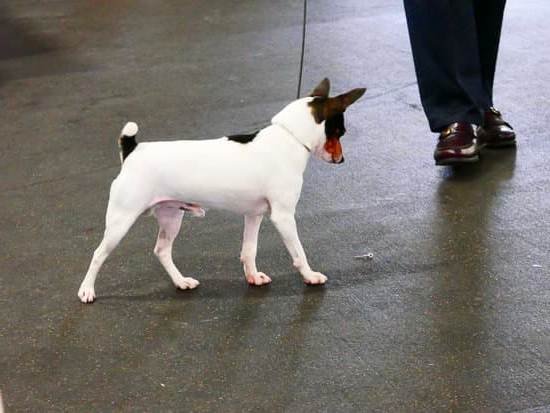Are you struggling with leash training your furry companion? This article will guide you through the process of how to leash train dogs, from understanding the importance of this training to tips for maintaining good leash behavior in the long term. Leash training is an essential skill for any dog owner, as it allows for safe and enjoyable walks while also providing necessary exercise and mental stimulation for your canine friend.
Choosing the right leash and collar for your dog is crucial in ensuring a comfortable and effective training experience. Introducing the leash and collar to your dog in a positive manner sets the groundwork for successful training. Teaching basic commands such as heel and leave it, along with starting the actual leash training process, are key steps in developing good walking behavior.
Once you have mastered the basics, common challenges in leash training may arise, but with patience and consistency, these can be overcome. Providing positive reinforcement and rewards for good behavior will reinforce your dog’s understanding of proper walking etiquette.
Finally, we will provide troubleshooting tips for common leash training issues that may arise and offer guidance on how to take your dog for a successful walk on a leash. Stay tuned for expert advice on achieving long-term success in maintaining good leash behavior.
Choosing the Right Leash and Collar for Your Dog
When it comes to leash training, choosing the right leash and collar for your dog is crucial. The type of leash and collar you select can greatly impact your dog’s comfort and safety during walks. There are various options available in the market, so it’s essential to consider your dog’s size, breed, and temperament when making this decision.
For smaller dogs or puppies, a lightweight harness or flat collar may be more suitable as they are less likely to pull and can be easily controlled with these options. On the other hand, larger dogs or those with a tendency to pull may benefit from a front-clip harness which helps discourage pulling. Additionally, for dogs that tend to lunge or have aggression issues, a head halter or martingale collar could provide better control.
| Type of Leash/Collar | Suitable For |
|---|---|
| Standard Flat Collar | Small Dogs/Puppies |
| Front-Clip Harness | Larger Dogs/Pullers |
| Head Halter/Martingale Collar | Dogs with Aggression Issues/Lungers |
It is important to ensure that the collar or harness fits properly without being too tight or too loose. A general rule of thumb is to be able to fit two fingers between the collar/harness and your dog’s neck comfortably. This will prevent discomfort or potential injury during walks.
Furthermore, always opt for high-quality material and sturdy construction when choosing a leash and collar as this will ensure durability and longevity. By taking these factors into account, you can select the most suitable leash and collar for your dog, setting a solid foundation for successful leash training.
Introducing the Leash and Collar to Your Dog
Understanding the Importance of Proper Introduction
Before starting the leash training process, it is crucial to properly introduce the leash and collar to your dog. This step sets the foundation for successful leash training and can make a significant difference in how your dog responds to being leashed.
Choosing the Right Equipment
It is important to select the appropriate leash and collar for your dog. For example, a small dog may do well with a lighter, thinner leash and collar, while a larger, stronger dog may require a more heavy-duty set. Additionally, it’s crucial to ensure that the collar fits comfortably and securely around your dog’s neck.
Gradual Introduction Process
Start by allowing your dog to sniff and investigate the leash and collar in a relaxed environment. Offer treats and praise as positive reinforcement for any calm behavior around the equipment. Once your dog appears comfortable with its presence, gently place the collar around their neck without attaching the leash. Gradually increase the duration of time that they wear it before moving on to introducing the leash itself.
By following these steps, you can help ensure that your dog is comfortable with wearing a collar and being leashed, setting them up for success in future leash training sessions.
Teaching Basic Commands Such as Heel and Leave It
When it comes to leash training your dog, teaching basic commands such as “heel” and “leave it” is crucial for a successful walking experience. These commands help to keep your dog safe and under control while on a leash, as well as ensuring a pleasant walk for both you and your furry friend.
Here are some tips for teaching these essential commands to your dog:
- Heel: Teaching your dog to walk by your side without pulling on the leash is a fundamental part of leash training. Start by holding a treat in your hand and encouraging your dog to walk beside you. Use the command “heel” consistently while walking, and reward your dog with treats when they stay close to you without pulling. Practice this command in different environments with varying distractions to reinforce the behavior.
- Leave It: This command is essential for preventing your dog from picking up potentially harmful items while on a walk. Start by showing your dog a treat in one hand and then closing your hand into a fist. When they show interest in the closed hand, give the command “leave it.”
Once they lose interest, reward them with a different treat from the other hand. Practice this command with different objects and gradually increase the level of distraction.
By teaching these basic commands effectively, you can ensure that your dog walks calmly and safely on a leash, making the overall walking experience enjoyable for both you and your pet. Consistency and positive reinforcement are key when teaching these commands, so be patient and practice regularly for best results.
Starting the Actual Leash Training Process
Now that your dog is comfortable wearing a collar and having a leash attached, it’s time to start the actual leash training process. This is an essential step in teaching your dog how to walk calmly on a leash without pulling or reacting negatively to external stimuli. Here are some steps to help you start the leash training process:
1. Begin in a low-distraction environment: Start practicing walking on a leash in an area with minimal distractions, such as your backyard or a quiet street. This will help your dog focus on following your lead without being overwhelmed by external stimuli.
2. Use positive reinforcement: Whenever your dog walks calmly beside you without pulling on the leash, be sure to reward them with treats, praise, or their favorite toy. This will encourage them to continue behaving well on the leash.
3. Practice basic commands: As you begin walking with your dog on a leash, reinforce basic commands such as “heel” and “leave it.” These commands will help guide your dog’s behavior while on the leash and ensure they understand what is expected of them during walks.
By taking these steps and being patient and consistent, you can effectively start the leash training process with your dog, setting the foundation for successful walks in the future. Remember that every dog learns at their own pace, so be sure to tailor your training methods to suit your dog’s individual needs and personality.
Dealing With Common Challenges in Leash Training
Managing Leash Reactivity
One common challenge in leash training is dealing with leash reactivity, where a dog may bark, lunge, or pull on the leash when encountering other dogs or people. To address this issue, it’s important to work on desensitizing your dog to these triggers. This can be done by gradually exposing them to stimuli at a distance while using positive reinforcement techniques to reward calm behavior.
Overcoming Pulling and Tugging
Many dogs have a natural instinct to pull and tug on their leash, making walks frustrating for both the owner and the dog. One method to overcome this challenge is through teaching loose-leash walking. This can be achieved by stopping whenever your dog starts pulling and only moving forward once they come back to your side and walk calmly. Consistency is key in addressing this behavior.
Addressing Fearful Behavior
Some dogs may exhibit fearful behavior when on a leash, including cowering, trying to run away, or showing signs of distress. It’s essential to approach this challenge with patience and understanding. Gradual exposure to different environments while offering positive reinforcement can help build confidence in your dog over time.
By tackling these common challenges in leash training with patience and diligence, you can help your dog become more comfortable and well-behaved on walks. Remember that every dog is unique, so it’s important to tailor your approach based on their individual needs and temperament.
Reinforcing Good Leash Behavior Through Positive Reinforcement
Positive reinforcement is an essential aspect of leash training for dogs. It involves rewarding your dog for displaying the desired behavior on the leash, such as walking calmly by your side or responding to basic commands. This technique helps to strengthen the bond between you and your dog, as well as encourages them to continue following leash etiquette.
When using positive reinforcement during leash training, it’s important to choose rewards that are highly motivating for your dog. This could include treats, verbal praise, or a favorite toy. Consistency is also key – make sure to reward good behavior every time it occurs during the training process.
In addition to rewards, timing is crucial when it comes to positive reinforcement. The reward should be given immediately after the desired behavior is exhibited, so that your dog associates the action with the incentive. Through consistent and positive reinforcement, your dog will learn to associate good behavior on the leash with pleasant outcomes, making them more likely to repeat that behavior in the future.
| Reinforcement Technique | Example |
|---|---|
| Treats | Offering a small piece of their favorite treat when they walk calmly on the leash |
| Verbal Praise | Cheering “good boy/girl” when they respond to a command while on the leash |
| Favorite Toy | Allowing them to play with their preferred toy as a reward for good behavior during leash training |
Taking Your Dog for a Successful Walk on a Leash
Once your dog has become accustomed to the leash and collar, it’s time to take them for a successful walk on a leash. Before going on the walk, make sure that your dog has had a chance to relieve themselves so they can focus on the walk. It’s important to remain calm and assertive as you start the walk, as dogs can pick up on their owner’s energy.
When starting the walk, allow your dog some time to sniff around and explore their surroundings. This is a good opportunity for them to release any pent-up energy before settling into a steady pace.
Once your dog has had this moment, encourage them to walk beside you in a calm and controlled manner by using verbal cues such as “heel” or “let’s go.” Be patient with your dog as they learn the proper walking behavior; this is an important part of the training process.
During the walk, be attentive to your dog’s body language and reactions. If they become distracted or try to pull on the leash, use gentle corrections and positive reinforcement to guide them back into focusing on walking calmly beside you. Remember that consistency is key, so reinforce good behavior throughout the walk with praise and rewards. By maintaining this consistent approach and providing positive reinforcement, you can help your dog achieve success during their walks on a leash.
Troubleshooting Common Leash Training Issues
Leash training a dog can sometimes come with its fair share of challenges. From pulling to barking or refusing to walk, it’s important to address these common issues in order to have a successful leash training experience. One common issue that dog owners face is their dog constantly pulling on the leash during walks. This can be frustrating and even dangerous if not addressed properly.
Another common problem is when dogs refuse to walk on a leash altogether. This can be due to fear, anxiety, or previous negative experiences with leashes. It’s essential to identify the root cause of this behavior in order to effectively address it. Additionally, some dogs may exhibit aggressive behavior while on a leash, such as barking or lunging at other animals or people.
To troubleshoot these common leash training issues, it’s important for dog owners to remain patient and consistent in their approach. Using positive reinforcement techniques and rewards can help encourage good behavior while discouraging unwanted behaviors. Seeking the help of a professional trainer may also be beneficial in addressing these challenges effectively. By identifying the underlying causes of these problems and working through them systematically, both the dog and owner can eventually enjoy successful leash training experiences.
Tips for Maintaining Good Leash Behavior for the Long Term
In order to maintain good leash behavior for the long term, it is important to continue practicing and reinforcing the training techniques that were introduced during the initial leash training process. Consistency is key when it comes to reinforcing positive leash behavior in dogs. Be sure to continue practicing basic commands such as heel and leave it during walks, and consistently reward your dog for good behavior.
Additionally, it is important to remain patient and understanding with your dog as they continue to learn and grow. It is natural for dogs to have setbacks or moments of disobedience, but it is crucial to remain calm and consistent in your approach to correcting these behaviors. Remember that leash training is an ongoing process that requires patience, understanding, and positive reinforcement.
Lastly, it can be beneficial to seek professional help if you are experiencing persistent issues with maintaining good leash behavior in your dog. A professional dog trainer or behaviorist can provide personalized guidance and support based on your dog’s specific needs. With dedication, patience, and proper training techniques, you can help your dog maintain good leash behavior for the long term, resulting in enjoyable walks for both you and your furry friend.
Frequently Asked Questions
How Do I Get My Dog to Stop Pulling on the Leash?
Getting your dog to stop pulling on the leash requires consistent training and positive reinforcement. Start by teaching them to walk by your side using treats and praise. Whenever they start pulling, stop walking until they loosen the tension on the leash. Over time, with patience and practice, your dog will learn to walk calmly beside you without pulling.
How Do I Train My Dog to Walk Properly on a Leash?
Training your dog to walk properly on a leash involves using positive reinforcement techniques such as treats, verbal praise, and gentle corrections. Begin by teaching them to follow your lead and reinforce good behavior while discouraging pulling or lunging. Consistency and patience are key in helping your dog understand how to walk politely on a leash.
How Long Does It Take to Leash Train a Dog?
The time it takes to leash train a dog varies depending on the individual dog’s temperament, previous experiences, and consistency of training. Some dogs may learn how to walk properly on a leash within a few weeks, while others may take several months of consistent training.
It’s important to remain patient and persistent in the training process in order to help your dog become comfortable walking on a leash without pulling or misbehaving.

Welcome to the blog! I am a professional dog trainer and have been working with dogs for many years. In this blog, I will be discussing various topics related to dog training, including tips, tricks, and advice. I hope you find this information helpful and informative. Thanks for reading!





